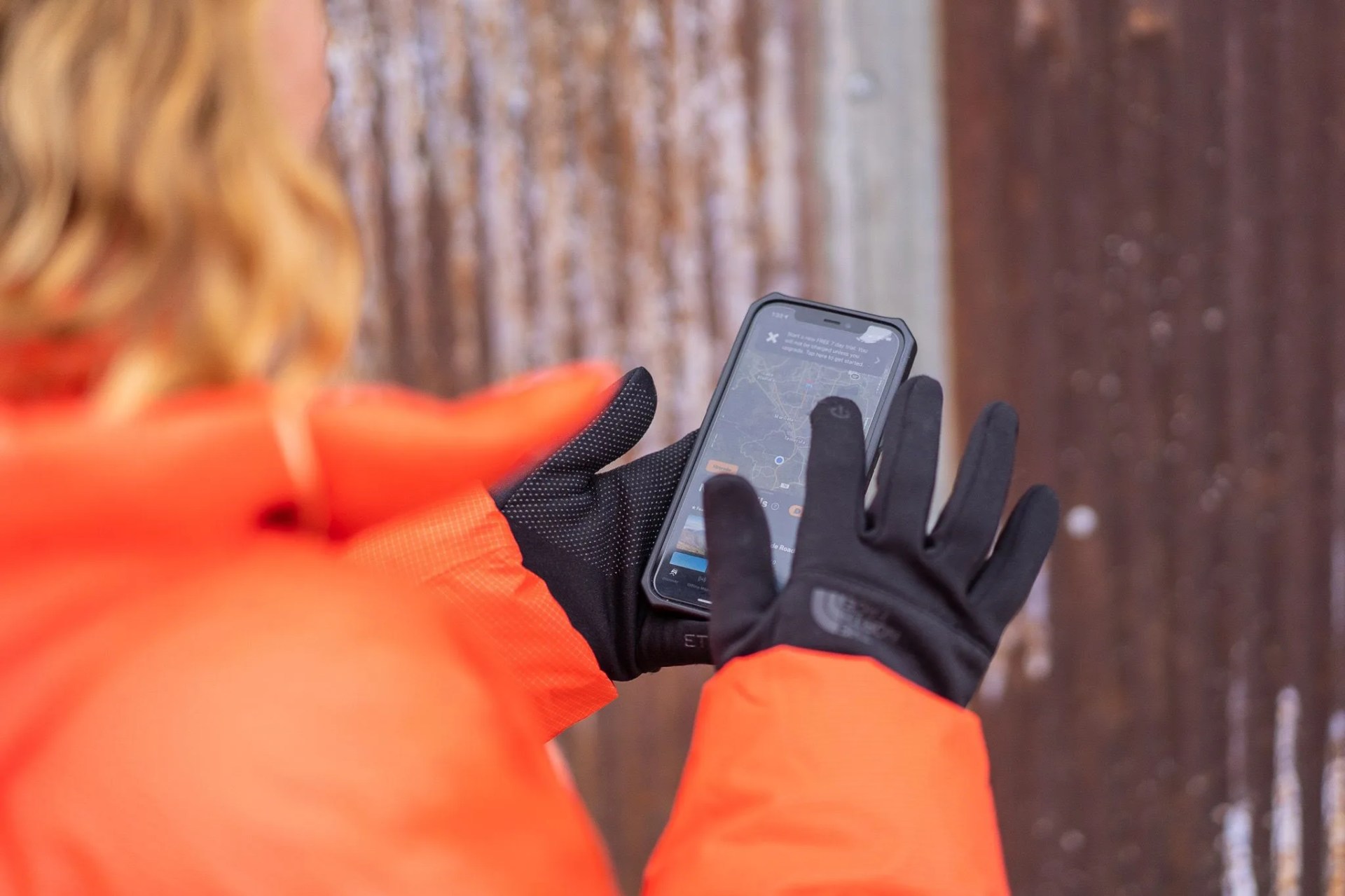Products like touchscreen gloves are so ubiquitous that it’s easy to take them for granted. But have you ever considered how these modern marvels actually work?
While wearing a pair on a trip to Copper Mountain, it struck me that I had no idea what tech made it possible to use my smartphone with gloves on. So I decided to look into it and save you a trip down the rabbit hole. Here’s what I found.
The tech behind the touch
There are two types of tech when it comes to touchscreen-compatible gloves: resistive and capacitive.
Resistive tech uses pressure to detect touch commands. Usually, the screen of a smart device has two layers: the first is a base layer made of glass or plexiglass, and the second is a transparent conductive layer.
When you press the screen, you push the top layer into the bottom layer. Using this pressure point, the resistive device identifies the location where the two layers are touching and processes it as the location for your touch command. A common use of resistive tech is in ATMs, checkout stands and terminals — the hard plastic top layer makes them much more durable than capacitive ones (but less responsive).
Capacitive touchscreen tech works differently. Rather than identifying commands using pressure, it relies on capacitance (the ability of a system to store an electric charge).








